In a year like this one, defined by historic turbulence, finding solace in art—whether it’s television, literature, poetry, films, paintings, music or otherwise—has become a crucial component of trying to survive the everyday of the pandemic.
Yet amidst movie and live theater performance shutdowns, film release postponements, and film festival cancellations, it seems unlikely (even scandalous!) to begin a new venture into arts distribution—given arts organizations are reckoning with the future of their industry.
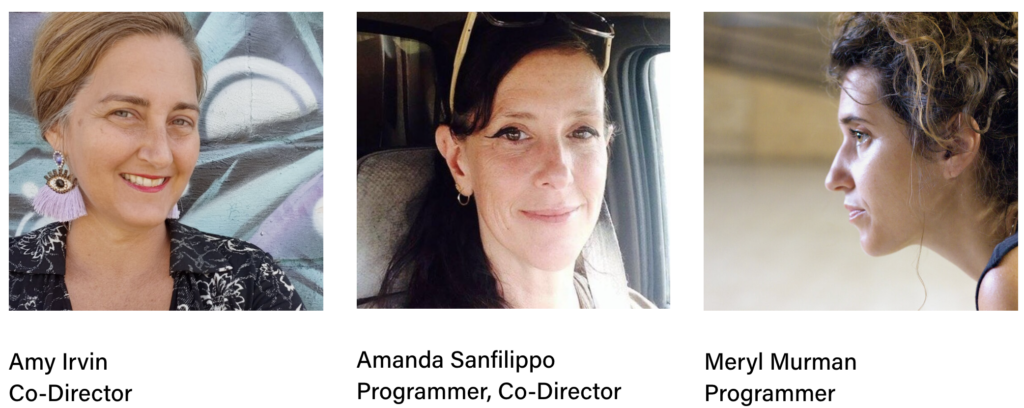
Not to be deterred, three artists and film festival organizers in Louisiana decided in fact, this may be the best year to redefine how we make, distribute, consume and share cinema with each other.
Outgaze Film Festival: Free and Online, October 21-31
Funded by Creative Community League based in New Orleans, the Outgaze Film Festival is organized by Amy Irvin, Amanda Sanfilippo and Meryl Murman.
The three women are artists in their own right, as well as reproductive rights activists. In fact, the festival’s full name is Outgaze Film Festival: a virtual look at embodiment, inclusivity and resilience.
The intention of this festival is to not only showcase work by young and emerging queer and feminist filmmakers, but to propose unconventional content and highlight filmmaking processes that are creative and collaborative, and resist traditional patriarchal and capitalist modes of production and distribution.
The program of the festival is broken up into three sections:
Visions in the dark includes one feature-length film by Iranian filmmaker Suzan Iravanian called Leakage:
“One day Fooziye, a middle-aged woman, discovers that crude oil is coming out of her body. This unusual yet empowering phenomenon awakens the hope of a better future in her. On the other hand, it triggers uncertainty and paranoia in the lives of the people around her.”
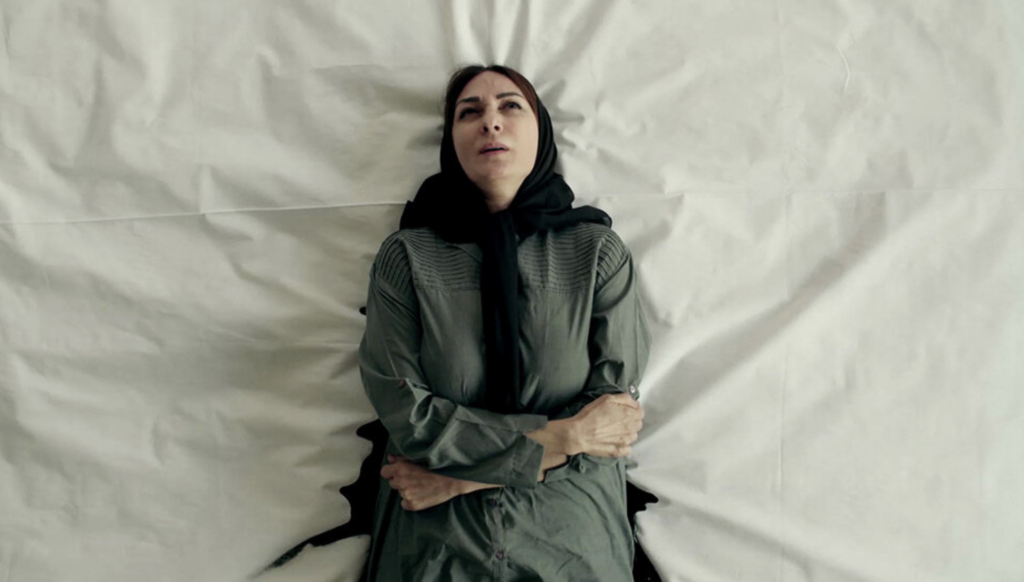
The short featured in visions in the dark is called The Bottom: A Noise Opera.
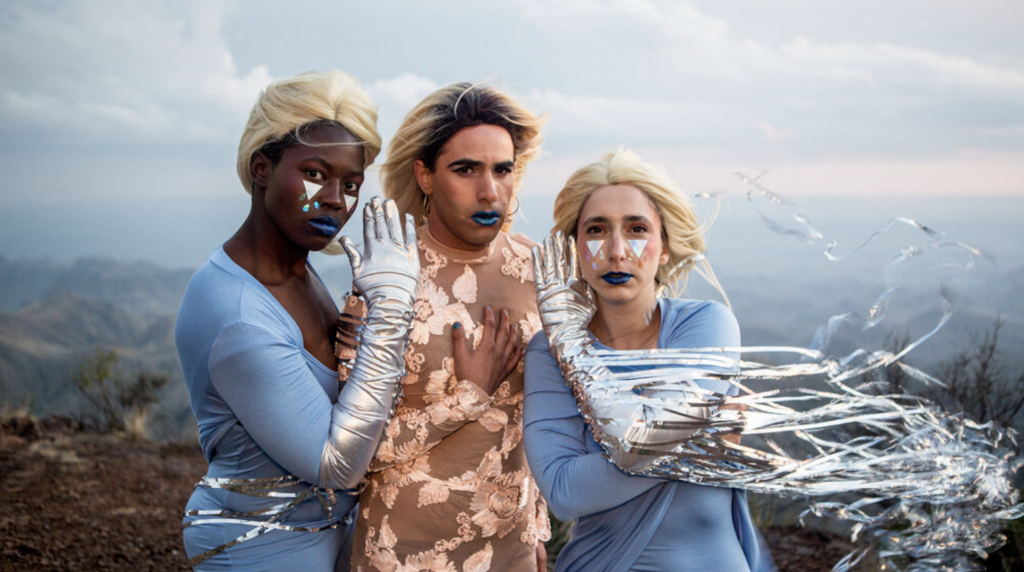
The rituals of reclamation program includes one feature—Scheherazade’s Diary, about female inmates of Lebanon’s Baabda Prison—and six shorts, with filmmakers from Mexico, the U.S. and Myanmar, among others.
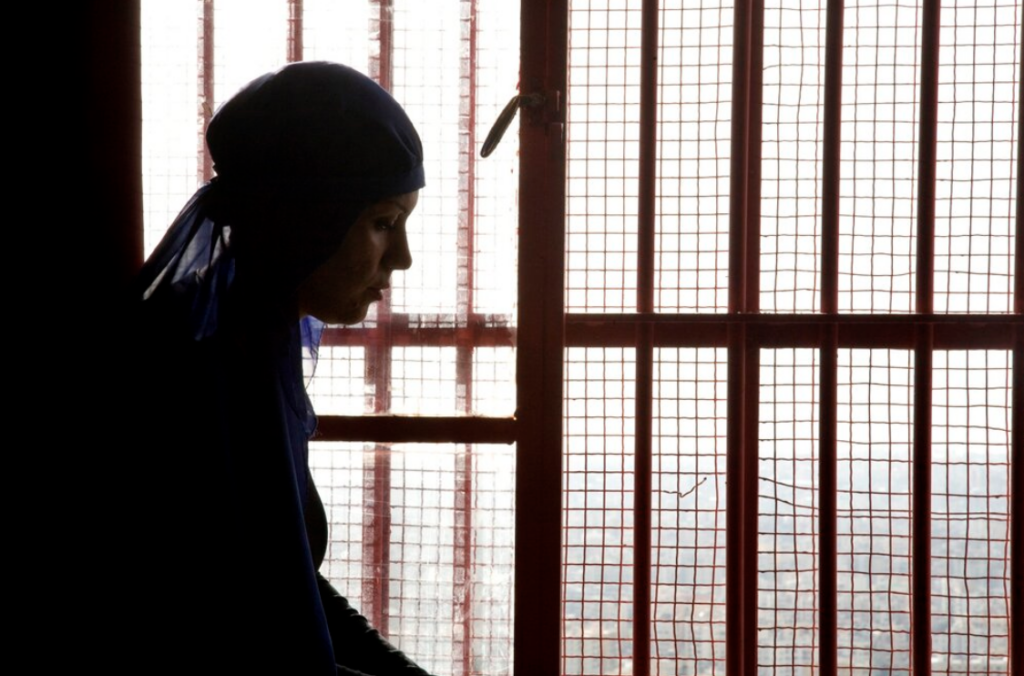
our bodies, our shadows includes one feature—36 Hours—and four shorts, exploring:
How are we haunted? How is our labor a reconstruction and reckoning with the past? How does embodied memory dialogue with self-doubt, self-preservation and self-care?
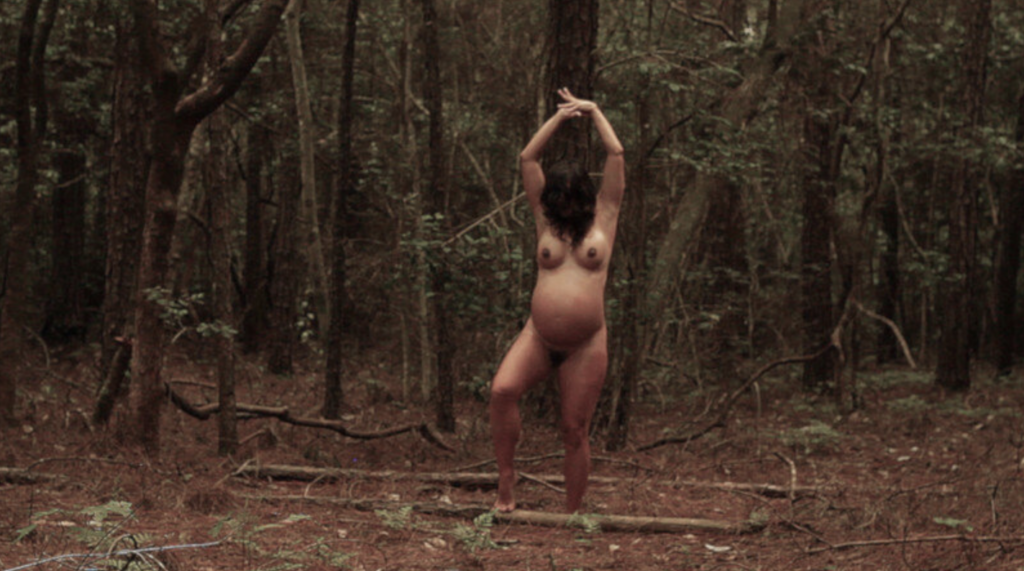
Meryl Murman and Amanda Sanfilippo on the Importance of Opening Up Spaces for Emerging Filmmakers
Two of the three organizers of the festival—programmers Meryl Murman and Amanda Sanfilippo—spoke with Ms. in advance of the festival.
Murman and Sanfilippo know the importance of opening up spaces for emerging filmmakers to share their work, as well as the necessity of creating horizontal systems of filmmaking that embrace mystery and reject capitalism.
They both spoke on the relevance of the title—”Outgaze”—a reference to the need to look beyond cinematic architecture and find new ways of looking at the real and fictional in a way that is consensual, resilient and interested in examining identity as a mutable process of becoming and unbecoming.
“At Outgaze, we’re trying to look beyond,” Sanfilippo told Ms.
Both Sanfilippo and Murman are excited to honor films rooted in exploring the discovery and surprise. They said they often feel isolated at major film festivals, since are rooted in vertical organizational practices and don’t necessarily encourage participation.
Murman: There is this weird narrative that I see at film festivals in this country that if they program some female, queer, POC filmmakers, that this somehow reflects progress or it reflects change.
Listen, I’m all about these folks getting programmed into Sundance—that’s terrific, the more the merrier. But it’s kind of like putting a Band-Aid on cardiac arrest. It’s so superficial, it is implausible to think of it as actual change or transformation.
The entire system needs to be examined, questioned, and contested. This includes the society that views this as transformative or change or good enough. Diversity quotas are data …. But we’re seeing right now in COVID that data is still data. It’s not the cure for COVID, nor is it the cure for patriarchy, and data can also be read and interpreted in many different ways.
Sanfilippo: Data is a double-edged sword. It can incarcerate or it can liberate.
Murman: Exactly.
Sanfilippo: So therefore, you have to be very careful while handling it.
Murman: Yup. And it is not a solution in and of itself. That’s the point that I’m essentially trying to make, and this is why small festivals like ours do have a purpose. We can be disruptive, we can question, be in dialogue with, and challenge our audiences about these things. About audience buy-in to the market-consumer relationship, which is really just as important as what we program. That the film and the audience are actually equal parts of the problem, and equal parts of the solution….
Subconsciously there’s this notion which is inherent in consumerism that as an audience one is passive. Which then, kind of places cinema on this pedestal, or in the realm of propaganda, which is kind of funny when you consider that that’s what propagated the industry into existence to begin with.
I think the internet is radically challenging this relationship. In terms of how audiences react with film, in a way that is both positive and negative, but technology itself is highly contesting this.
One of our goals with Outgaze is to make films that are disrupting, or breaking with this system. To make it accessible to people who otherwise might not have access to them. Films that not only propose how content is feminist/queer, but films that also were made in unconventional ways. Where there was at least some if not fully conscious decisions on behalf of the filmmakers to deconstruct from a feminist or queer lens the mode of production. To move away from patriarchal, vertical industry male-gaze dominated, capitalist-inherent filmmaking.
They both hope to bring a more communal spirit to their festival—or as Sanfilippo puts it, to use “cultural strategies for movement building” that support artists in their process of becoming “cultural redesigners and co-collaborators in activism.”
Murman, in particular, remarked on the importance of funding emerging artists:
Each of the filmmakers selected for the festival will be receiving an honorary monetary stipend in an industry that, according to her, “almost never are given any kind of compensation at festivals for what they do. Not only that, but for most festivals you have to pay to apply…. So that’s something that we decided right off the bat was really important to us. If we’re really going to support these people, then part of that is with what we do have. Making sure that they’re recognized in name and some form of financial compensation.
Sanfilippo spoke on the importance of opening up the meaning of “community”:
We want to create community but we don’t want to create it as a narrow gatekeeping, which is what happens sometimes…. So you become a community, in a way, by making this film, and engage the audience as another membership of this community. And how we engage [with] community is really really part of recreating and reimagining a culture, [a] systems of culture that are deeply inclusive.
I want to be careful about that word too, because when you say inclusive it indicates exclusivity … I do think things have been excluded but I don’t want it to have this binary understanding … we’re not being inclusive in that being exclusive, right? We’re really trying to figure it all out in this medley, swirling of conscious and unconscious artistic expression.
They are excited not only to feature feminist and queer voices from Louisiana—at least three entries are from the state—but also to celebrate filmmakers from around the U.S. and the world.
“I’m always excited about feminist and queer voices from other cultures and how these stories emerge in different cultures,” said Murman. “Where the correlations, similarities and differences are between filmmakers, here and in other parts of the world.”
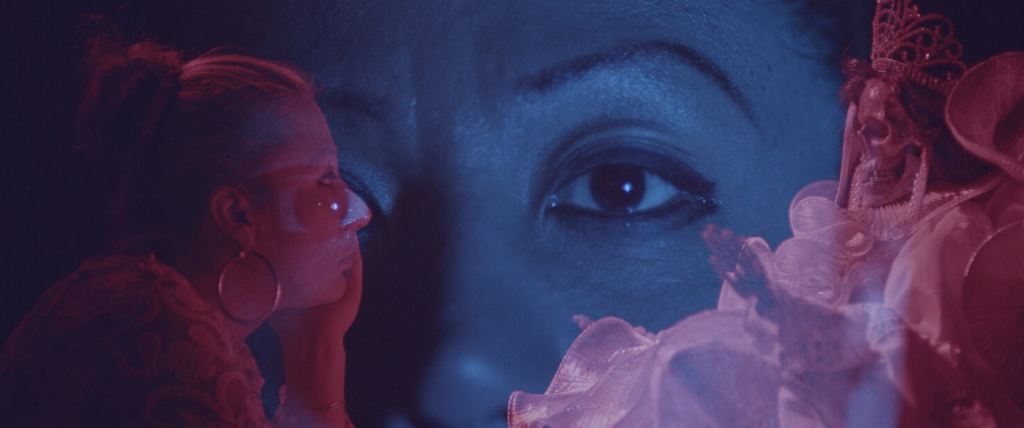
Most of all, they seem hopeful that audiences feel allowed to exist in a space in queer and feminist cinema where they are able to feel intimate with films without feeling like the films are trying to “get you somewhere.”
As artists themselves, the programmers are fascinated by what it means to live in discomfort in making art—not only to express places that aren’t necessarily embraced by Hollywood or mainstream cinema, but to examine the curious aspects of living in our bodies that allows us to feel sheltered, seen and held enough to question the supposed rules that govern our society.
In addition, they are particularly excited to feature work that focuses on issues not always explored in major festivals such as the idea of intimacy as action, characters as a collection of shifting genres and embodied erotic experiences and “pleasure as activism.”
They hope that the spirit of generosity envelops the entire festival and that it succeeds in engaging holistically with every film as a possibility for a new kind of language and world.
Murman: A huge value that I find in the LGBTQ and the queer community is this idea of community. In my experiences at film festivals they’ve felt kind of isolating and vertically oriented, which is something that I sort of reject.
So when I’ve programmed things in the past, even on very limited resources, I’ve really tried to bring the filmmakers together, or create containers in ways that they can connect that are more intimate. That aren’t this kind of sterile vibe and maintain connections past… you can’t force people, of course, but you can offer space. And so translating that into an online platform is going to be challenging but it’s also an exciting challenge. Because it also broadens the spectrum of where filmmakers can come from.
And as an artist in my own practice, both as a creator and an educator—having these kinds of conversations with women in different parts of the world, with queer communities in different parts of the world, with LGBTQ [folks] in different parts of the world, is kind of almost like a life support. So to bring this into a film festival context is really important. And then kind of one step beyond that, which is the audience engagement.
The Outgaze Film Festival is from October 21-31. Get your free festival passes here.
You may also like:





